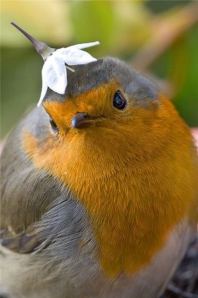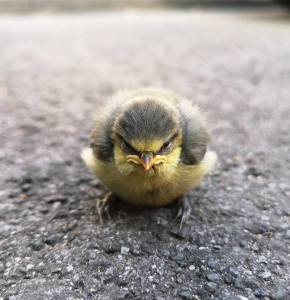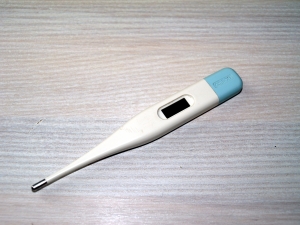On my right sat a quantum engineer. She was facing a melanoma specialist who works at a medical school. Leftward of us sat a networks expert, a flatworm enthusiast, and a condensed-matter theorist.
Farther down sat a woman who slices up mouse brains.
Welcome to “Coherent Spins in Biology,” a conference that took place at the University of California, Los Angeles (UCLA) this past December. Two southern Californians organized the workshop: Clarice Aiello heads UCLA’s Quantum Biology Tech lab. Thorsten Ritz, of the University of California, Irvine, cofounded a branch of quantum biology.

Quantum biology served as the conference’s backdrop. According to conventional wisdom, quantum phenomena can’t influence biology significantly: Biological systems have high temperatures, many particles, and fluids. Quantum phenomena, such as entanglement (a relationship that quantum particles can share), die quickly under such conditions.
Yet perhaps some survive. Quantum biologists search for biological systems that might use quantum resources. Then, they model and measure the uses and resources. Three settings (at least) have held out promise during the past few decades: avian navigation, photosynthesis, and olfaction. You can read about them in this book, cowritten by a conference participant for the general public. I’ll give you a taste (or a possibly quantum smell?) by sketching the avian-navigation proposal, developed by Thorsten and colleagues.

Birds migrate southward during the autumn and northward during the spring. How do they know where to fly? At least partially by sensing the Earth’s magnetic field, which leads compass needles to point northward. How do birds sense the field?
Possibly with a protein called “cryptochrome.” A photon (a particle of light) could knock an electron out of part of the protein and into another part. Each part would have one electron that lacked a partner. The electrons would share entanglement. One electron would interact with the Earth’s magnetic field differently than its partner, because its surroundings would differ. (Experts: The electrons would form a radical pair. One electron would neighbor different atoms than the other, so the electron would experience a different local magnetic field. The discrepancy would change the relative phase between the electrons’ spins.) The discrepancy could affect the rate at which the chemical system could undergo certain reactions. Which reactions occur could snowball into large and larger effects, eventually signaling the brain about where the bird should fly.

Quantum mechanics and life rank amongst the universe’s mysteries. How could a young researcher resist the combination? A postdoc warned me away, one lunchtime at the start of my PhD. Quantum biology had enjoyed attention several years earlier, he said, but noise the obscured experimental data. Controversy marred the field.
I ate lunch with that postdoc in 2013. Interest in quantum biology is reviving, as evidenced in the conference. Two reasons suggested themselves: new technologies and new research avenues. For example, Thorsten described the disabling and deletion of genes that code for cryptochrome. Such studies require years’ more work but might illuminate whether cryptochrome affects navigation.

The keynote speaker, Harvard’s Misha Lukin, illustrated new technologies and new research avenues. Misha’s lab has diamonds that contain quantum defects, which serve as artificial atoms. The defects sense tiny magnetic fields and temperatures. Misha’s group applies these quantum sensors to biology problems.
For example, different cells in an embryo divide at different times. Imagine reversing the order in which the cells divide. Would the reversal harm the organism? You could find out by manipulating the temperatures in different parts of the embryo: Temperature controls the rate at which cells divide.
Misha’s team injected nanoscale diamonds into a worm embryo. (See this paper for a related study.) The diamonds reported the temperature at various points in the worm. This information guided experimentalists who heated the embryo with lasers.
The manipulated embryos grew into fairly normal adults. But their cells, and their descendants’ cells, cycled through the stages of life slowly. This study exemplified, to me, one of the most meaningful opportunities for quantum physicists interested in biology: to develop technologies and analyses that can answer biology questions.

I mentioned, in an earlier blog post, another avenue emerging in quantum biology: Physicist Matthew Fisher proposed a mechanism by which entanglement might enhance coordinated neuron firing. My collaborator Elizabeth Crosson and I analyzed how the molecules in Matthew’s proposal—Posner clusters—could process quantum information. The field of Posner quantum biology had a population of about two, when Elizabeth and I entered, and I wondered whether anyone would join us.
The conference helped resolve my uncertainty. Three speakers (including me) presented work based on Matthew’s; two other participants were tilling the Posner soil; and another speaker mentioned Matthew’s proposal. The other two Posner talks related data from three experiments. The experimentalists haven’t finished their papers, so I won’t share details. But stay tuned.

Posner molecule (image by Swift et al.)
Clarice and Thorsten’s conference reminded me of a conference I’d participated in at the end of my PhD: Last month, I moonlighted as a quantum biologist. In 2017, I moonlighted as a quantum-gravity theorist. Two years earlier, I’d been dreaming about black holes and space-time. At UCLA, I was finishing the first paper I’ve coauthored with biophysicists. What a toolkit quantum information theory and thermodynamics provide, that it can unite such disparate fields.
The contrast—on top of what I learned at UCLA—filled my mind for weeks. And reminded me of the description of asexual reproduction that we heard from the conference’s flatworm enthusiast. According to Western Michigan University’s Wendy Beane, a flatworm “glues its butt down, pops its head off, and grows a new one. Y’know. As one does.”
I hope I never flinch from popping my head off and growing a new one—on my quantum-information-thermodynamics spine—whenever new science calls for figuring out.
&
With thanks to Clarice, Thorsten, and UCLA for their invitation and hospitality.
Comments